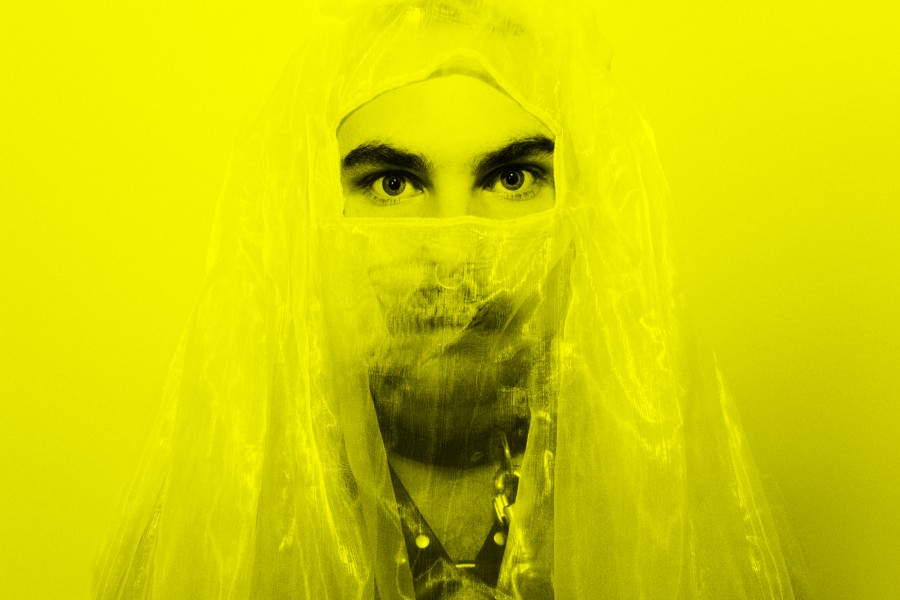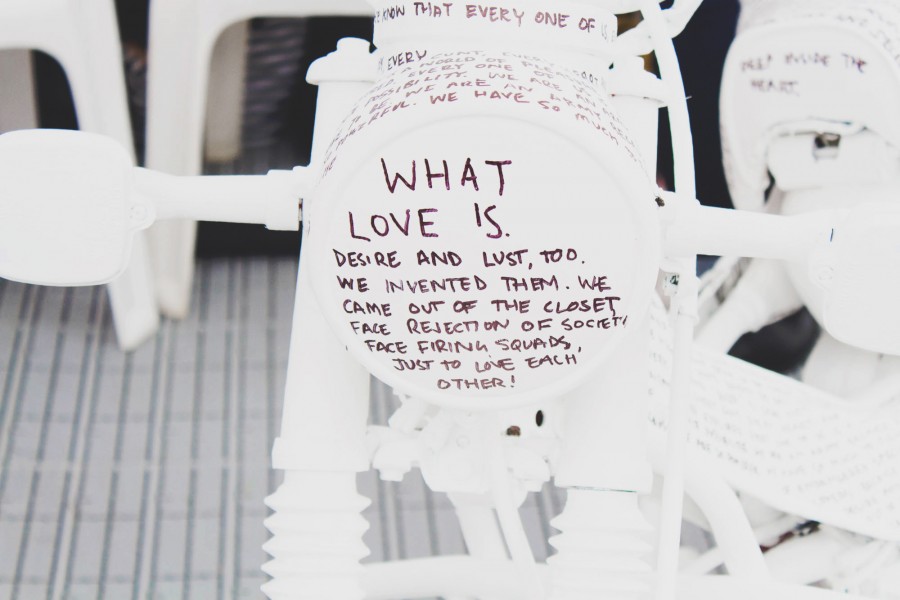Matto Lucas On Art As Queer Activism
By Katie Winten
To create art about identity politics can be terrifying and harshly critiqued. Art has a long lineage of challenging the mainstream, especially in relation to breaking down the barriers between private and public identities. For Melbourne artist Matto Lucas, the experience of queer male body value systems is at the heart of his work, speaking simultaneously of a personal exploration of queer culture and of societal restrictions and expectations on a broader scale. We talked to Lucas about the importance of art and grass-roots activism in queer culture, the problematic nature of art school, and the struggles he’s encountered in his artistic practice.
Your work definitely embodies the personal as political. What role do you think art plays in queer culture?
Art empowers, or art can empower, and art is incredibly important in fringe, minority cultures and queer culture. Making work that embodies the self and uses the body as a weapon can be an important tool to fight against the status quo.
But we need to work harder. Artists, and queer artists, need to work harder.
I’m tired of ‘gay art’ being just another platform for the fetishisation of consumer ‘pink doller’ gay bodies; terrible oil paintings of abs on white, muscle-twinks or black and white photographs of dicks, the constant ‘appreciation of the male form’ which essentially is just fitness models.
Yes, there is a place for that kind of stuff, but personally I’m sick of it. I’m tired of that being what represents our ‘queer artists’ – it’s done, it’s boring and it’s time to make a conversation about something else.
I’m interested in your choice of mediums. Do photography and performance hold more weight when exploring identity politics?
One of the most powerful things about the photograph is that is both a truth and lie at the same time. It is an object as well as representing object – it can be both.
We inherently believe that there is honesty within the photograph as a medium, and that allows us to use that inherent truth to explore something that is ‘not true.’ This ‘push and pull’ with the photographic medium, and this philosophy is what excites me about the medium. I try to subvert traditional photographic genres like portraiture to play with identity, representation and perception.
My performance work evolved out of me wanting to represent the ‘real pain’ involved in not just identity politics but mental illness and mental health as well. I would say that it gives me a fuller experience to encompass everything I am trying to explore – queerness, gender, body value systems and psychological landscapes. Performance, for me, is inescapable for a patron and what interests me personally is creating affective work and work that hurts.
You are the focus of a lot of your work. Does vulnerability ever scare you? Or do you find it’s a more effective way to engage new audiences?
This is a scary question. I have struggled, quite badly at points, with body dysmorphia and depression – mostly related to body image issues – this being both an inspiration to my practice as well as a personal struggle.
At the beginning I used myself because I was there. I was the body that was around to do the work and make the work. It was terrifying – it still is. And creating performance works takes a lot out of me, mentally as well as physically.
By using my body – which has been my worst enemy and biggest vulnerability, hopefully the performances act as a kind of catharsis or a healing process in some way (?)
Perhaps I believe that, on a selfish level, for me, I am casting spells, or doing therapy throughout the works.
These performance works that I make try to utilize the body (my body) as a metaphor for mental health and psychological status. I do feel as though it engages and activates more so than a still image or a ‘passive’ work.
You’ve been to art school, and have also shown in a number of artist run spaces. Are there spaces that hold importance for you when showing your work?
I’m really lucky to have exhibited in public spaces like the Melbourne Library Service (twice) and I really like having aggressive, political queer art exposed to a wide audience. It’s really no good just exhibiting for Midsumma or other queer audiences, even if that is a celebration and my work is for queer men, it’s also more than that.
I have a few favourite galleries in Melbourne (commercial and private) and galleries here have been very kind to me. But I love showing and working in ARI’s and non-traditional spaces.
“Art school” is a bit of a double-edged sword. On one hand it does expose you to other practitioners and art practices and it does push you – but academic art can become something quite strange and self-serving, removed. Lately there is this obsession with fetishised formal minimalism with work, which can become so smooth, so clean and perfect that it leaves no entry points.
Your recent work ‘Binaries’ explores “our social understandings of [the] binary within our culture and the fetishisation, defamation and connotations associated with “MASC” and “FEM” as fashionable labels”. Do you think that our society has the potential to truly transcend these binaries?
I do – and part of that belief is why I made the work.
The series came about because I was invited to create some work for the Melbourne Library Service (Flinders Lane) group exhibition “Challenging Dewey” which looked at the Dewey Decimal system’s categorization of ‘queer’ topics. I started thinking about categorization as a whole and how we do this in our own community a lot to ourselves. There is a lot of terminology and labeling used in our community – often in a positive way, but can be detrimental or constrictive.
Originally I had a lot more ‘labels’ and tee shirts but found that when only presented with a limited and superficial binary and label – and being forced to make a decision to choose, it was more interesting to show the struggle that this binary creates.
The guys in the images were strangers I sourced on queer social media (grindr etc) and I ended up having some great conversations post-photographing them. Some of them were like “oh I wish I had of chosen both tees” or that they wanted to turn the tee inside out etc. It was interesting after the moment had happened, and was captured how they were thinking of ways to subvert the binary and labels. So hopefully this bleeds out into further everyday life.
What does grass-roots activism in queer culture mean for your artistic practice?
I would like to think that my art practice sits somewhere in queer activism – by attempting to open up conversations, not just about the body, but about connectivity and mental health.
The work that is done by other fearless, assertive, passionate queer brothers and sisters at the moment politically and socially is incredibly inspiring to me. What’s happening with Safe Schools and Marriage Equality as well as Trans Health, not to mention LGBTQI2 performers, speakers and bodies that exist visibly, who fight for us and our rights in many different veins of life really encourage me to make the work that I do.




